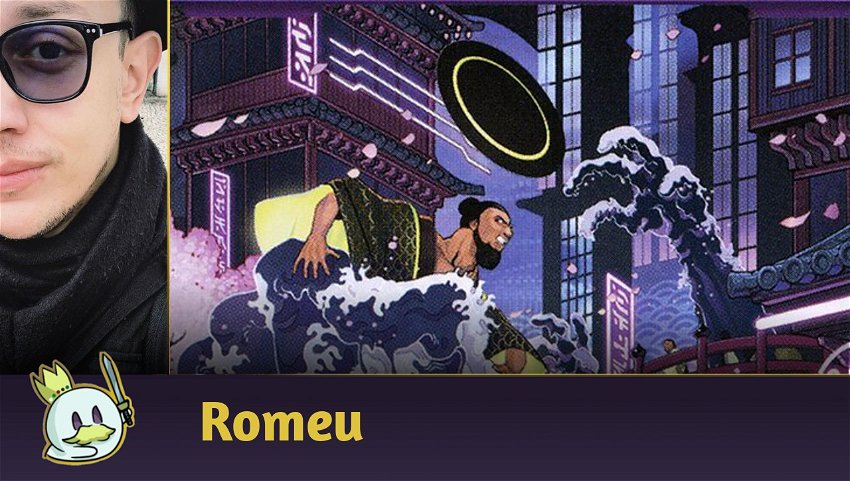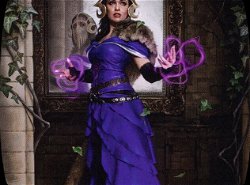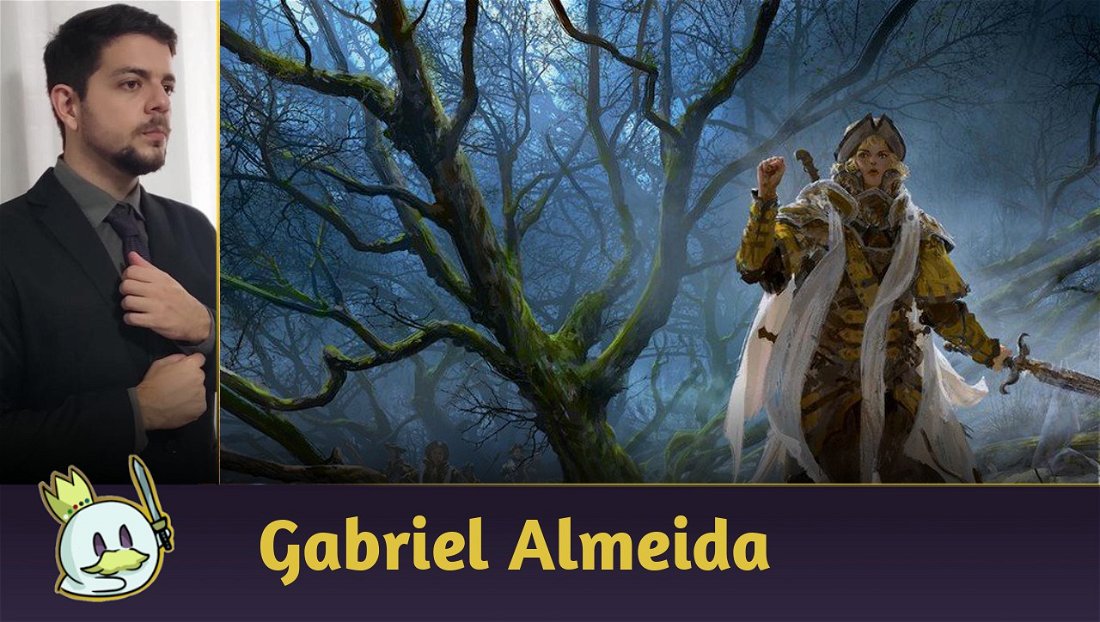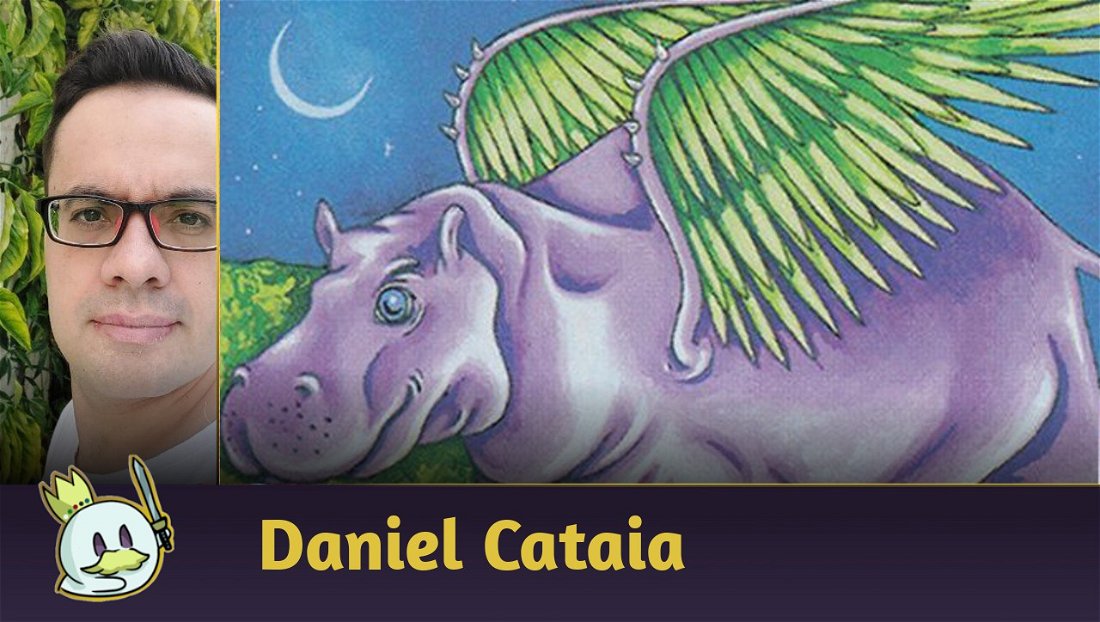Standard's first week with The Meathook Massacre banned showed some particular changes in the Metagame, specially with four or five color decks appearing in tournaments, while Aggro notoriously increased on the ranked ladder.
Mono Black Midrange was the first deck to establish the predominance of Black-Based in the format, and consequently was the one that suffered the most from the ban, as it doesn't have as much flexibility as the other colors to cover certain weaknesses. Its only sweepers are now conditioned to deal with smaller creatures, which don't seem to impact the competitive landscape as much today.
However, the strategy is still a solid option for ranked games today, so in this article we will cover the updated version of Mono Black Midrange after the bans.
The Decklist
Mono Black Midrange's plan is pretty straightforward: you do 1-for-1 trades with your removals to then bury your opponent in card advantage from turn 4 onwards. It's exceptional against creature-focused archetypes that don't generate tons of value on their own, and manages to behave well against the other Midranges if they don't have the means to play "on top".

In that sense, Mono Black is the more traditional version of what a Midrange proposes to do, while also following a slight Control line aimed at delaying the opponent's game and then casting Invoke Despair — a mini-Cruel Ultimatum able to win the game on its own with the absurd amount of card advantage it offers.
Maindeck

Our early-game is focused on two elements: threats or interaction. Fortunately, most of our creatures do something besides attacking, generating 2-for-1 effects and/or forcing the opponent to respond immediately, so they don't get buried in card advantage.
Evolved Sleeper and Concealing Curtains are unimpressive one-drops, but they are also two powerful late-game mana sinks. Normally, only two copies of Concealing Curtains are played, but with the addition of Aggro and Mono Black's low flexibility in dealing with varied threats, including a third and perhaps even a fourth copy is a viable option.
Tenacious Underdog is a good clock against slower decks and a good blocker against Aggro, as its 3/2 body trades relatively well with creatures of that same turn sequence, delaying the opponent's clock by one turn.
Graveyard Trespasser is a headache for archetypes that are interactive and/or rely on a specific element in the graveyard to function. Its incidental graveyard hate becomes even more useful in a format where most other Midranges are resorting to cards like Tenacious Underdog, Malevolent Hermit and Dennick, Pious Apprentice.
Finally, Reckoner Bankbuster is an extra value engine that also offers a good clock against Control. It's not the best option against fast archetypes, but very helpful in attrition games.

Our late-game consists of three bombs. Sheoldred, the Apocalypse is a powerhouse which turns games on its own. Its mere presence can delay the most aggressive strategies and punish the opponent for taking too long to finish the game.
Sorin the Mirthless is another card advantage engine that offers good evasive bodies for combat. Its positive ability is a bit risky in a list with many high-cost cards, but we have enough low curve slots to take advantage of it.
Ultimately, Invoke Despair is the nightmare every Midrange wants to prevent you from solving. It offers a mighty 3-for-1 in attrition games, punishing lists that seek to resolve one threat at a time and/or win through value, and while not as effective against go wide strategies, this spell still exerts a favorable trade for its controller.

Our removals package seeks to address today's top Standard threats.
Cut Down is better against small creatures, but also handles Evolved Sleeper, Raffine, Scheming Seer and other permanents that fit its equation. Infernal Grasp is a universal answer, but less useful when there's too much pressure on the other side of the board.
Soul Transfer is a decent answer against Planeswalkers which also works to remove Ao, the Dawn Sky and Junji, the Midnight Sky with no drawback and at worst, you can also use it to return Sheoldred, the Apocalypse or another important creature from your graveyard.
Sideboard

Duress is our best "comprehensive answer" choice in Standard today. Another option in this slot would be Pilfer for its scope, but in every game where it would be important, I feel like I'm wasting slots trying to remove resources from the opponent instead of accumulating mine.
Let's face it, Duress isn't a very decent option against Midranges either, and its main function in Sideboard is to avoid and punish archetypes that need specific parts to work, like against Invoke Justice. However, it's also the most decent means we have to prevent certain permanents from coming into play and/or making sure your threats stays on the board.

You may have noticed and wondered at the absence of Liliana of the Veil in the Maindeck, and the reality is that in the Metagame we're in now, Liliana has been doing less than desired for a turn 3 play.
First, the Planeswalker is notoriously worse when there is room for go wide lists to punish targeted removals, which was made possible without The Meathook Massacre, and also motivated players to seek quick play in ranked matches in last week. Second, Liliana was also unimpressive against the best deck in the format right now, Esper Midrange.
It's still an excellent card in Midrange mirrors, especially against other Black-Based who aren't looking to populate the board like Esper, but its inclusion in the maindeck doesn't sound favorable for the current Metagame.

Still focusing on attrition matchups, we have an extra copy of Reckoner Bankbuster for more card advantage, and two copies of Junji, the Midnight Sky as a powerful and punishing threat.

To improve our game against the "go-wide", we have an additional removals package.
Path of Peril is the most decent sweeper left for Black-Based, as there are more one or two mana creatures that don't die to the various -2/-2 for three mana effects available in Standard today, while there are few permanents that Path of Peril wouldn't kill, but the other options do.
Parasitic Grasp is a good way to delay the "go wide" of the format. In Mono Red, it deals with Radha's Firebrand, Reckless Stormseeker, Kumano Faces Kakkazan and Reinforced Ronin for two mana, while killing any other creature for three, granting 3 life in the process. And against Humans, it doesn't just deal with Adeline, Resplendent Cathar and Jodah, the Unifier, the main engine of the five-color version.
The third Soul Transfer is aimed at Midrange mirrors as another means of interacting with Planeswalkers.
Mulligan and Postures

Mulligan
Mono Black isn't a difficult deck to pilot, but requires a great deal of prior knowledge of what strategies are succeeding in the format to identify, through the first land drops, the type of posture you need to take in that game.
An ideal hand will start with two to three lands, plus early and mid-game play that includes removals and creatures. Usually, your initial plan is to stabilize the game in the early game to bury your opponent in card advantage from turn 4 onwards, and for that, you can count on the topdeck to provide what is needed as the game goes on.
It is not recommended to try to hold hands that are too greedy. An Invoke Despair takes five mana to cast, and if you don't have three or more land drops and/or enough initial pressure on the board or interaction, it won't solve all problems on its own. The same can be said of Sheoldred, the Apocalypse, if you don't pressure the opponent in the first few turns, you won't capitalize on top of the removals they spend on other creatures, or the one they're saving to deal with the Phyrexian preator.
Posture
Unlike the other Midranges, Mono Black isn't as flexible about how to behave in each matchup.
Obviously against Aggro you want to extend the game into later turns where Sheoldred and Invoke Despair will stabilize the game in your favor, and against Control you aim to pressure the opponent with Tenacious Underdog and Graveyard Trespasser to punish them for wasting too many resources holding the game and/or tapping themselves out turn after turn, making it possible to cast Sorin the Mirthless and other bombs.
The real challenge is against Midranges. In them, you are severely punished for making the wrong choices because your cards are less flexible than theirs. Therefore, calmly assess whether you really need to remove what is on the board at that moment, or whether your opponent has opened any indication of what they intend to do next turn, and especially if what you plan to cast won't offer a positive Tempo to the other side.
Sideboard Guide
Esper Midrange
IN:

OUT:

With a plethora of 2-for-1 effects and a game plan that transitions between beatdown and control masterfully, Esper Midrange is one of, if not, the worst matchup for Mono Black, which probably explains its decline in the last week.
In Game 1, your best option is to respond appropriately to their main threats, but they are not few: Raffine, Scheming Seer, The Wandering Emperor, Sheoldred, the Apocalypse and Ao, the Dawn Sky are problematic cards on their own and will often overwhelm you in value.
Post-Sideboard, we try to adapt our game plan to theirs by playing over the top, improving our late-game and adding Duress, which is the best option we have to ensure that important spells how Invoke Despair resolve. We removed Graveyard Trespasser because, despite the good body and forcing a 2-for-1, the opponent can block it easily and without any substantial sacrifice by doing so,besides it doesn't offer any immediate value in the game. The same goes for Tenacious Underdog.
Rakdos Midrange
IN:

OUT:

Rakdos, despite including one more color, basically works like a Mirror Match, where we try to sequence our spells against theirs. However, this variant has a crucial difference: Fable of the Mirror-Breaker, which basically improves their engine and even allows to cast Invoke Despair faster.
This isn't a good match, but it's definitely more tangible than against Esper Midrange, as we essentially follow the same script of seeking to sequence our threats turn after turn. Our best chance, however, is to direct our interaction towards what generates some sort of immediate or long-term value, especially Fable of the Mirror-Breaker.
Junji, the Midnight Sky and Liliana of the Veil are good options for Game 2 as they help punish the opponent for playing too reactively, while we use Duress especially to deal with Planeswalkers and the Neon Dynasty saga.
You may notice that we remove two copies of Concealing Curtains, even though it operates as a threat coupled with discard spell, and we do so since the opponent has many ways to interact with it at Instant-Speed, and on the draw, it comes in a turn too late when compared to their main threat. The other creatures leave because they don't generate immediate value and/or are easy to respond to.
Mono Blue Delver
IN:

OUT:

Mono Blue is challenging. It has cheaper answers to our threats, and the fact that we exert an increasing mana curve doesn't help to maintain resource parity for long. Add that to the fact that Haughty Djinn and Tolarian Terror dodges Cut Down, and we have serious problems ahead. Our best route in Game 1 is to try to pressure them with our early-game threats to force them to play defensively.
Post-Sideboard, we removed Cut Down as it will rarely kill anything relevant in the list besides Delver of Secrets, and we also cut Invoke Despair since the opponent will rarely let it resolve, and five mana is a very high cost against a Tempo Deck, while we've added cheap ways to make sure our creatures and/or removals work, as well as cheaper removals, including Liliana of the Veil to deal with Tolarian Terror.
Mono Red Aggro
IN:

OUT:

The match against Mono Red is well-balanced. If you keep them from growing their board too much with your removals, you'll likely have the advantage from the moment you cast Graveyard Trespasser on turn 3 to delay their clock, and from there, a snowball is established with Sorin the Mirthless and Sheoldred, the Apocalypse.
Post-side, the game tends to improve due to our increased interaction, as we remove cards that play poorly against them, but remember that the primary target of Soul Transfer should be Chandra, Dressed to Kill, Squee, Dubious Monarch or, if the opponent runs it in Game 2, Atsushi, the Blazing Sky.
Five Color Humans
IN:

OUT:

Five Color Humans is a go-wide archetype that emerged in Early Access and has reappeared since its result in the last Standard Challenge. It's focused on playing legendary humans with Jodah, the Unifier to create a mighty army, and the absence of The Meathook Massacre improved its position in the Metagame.
Against them, we have two advantages: the first is that their manabase is VERY inconsistent and relies on Katilda, Dawnhart Prime to work as expected, and the second is that its early-game is relatively slow. On the other hand, things can easily get out of hand if we let the wrong threats remain in play.
Our focus here is dealing with Jodah, the Unifier, Halana and Alena, Partners and any creature that offers card advantage and/or makes the opponent's board grow too fast. Remember that Adeline's tokens, in addition to some of the most important two-drops, can be killed with Path of Peril, so try to save removals for what really matters throughout the game.
Conclusion
Mono Black Midrange is still a solid choice in Standard if you expect to face more Aggro, Control, or lists geared towards a specific tactic like reanimating or ramping into Titan of Industry, but when compared to other archetypes in its category, the flaws in its linear game plan are notorious.
It works well in ranked games and can probably win FNMs and other smaller events with ease, but in a super competitive landscape, the deck has become dated due to the development of the other archetypes.
Thanks for reading!














— コメント 0
, 反応 1
最初にコメントする